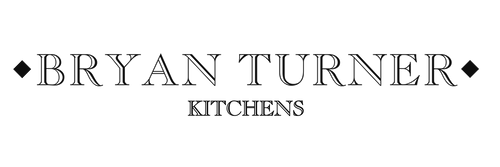When it comes to bespoke kitchen design, one of the key decisions revolves around storage options. Open shelving and closed cabinets each offer distinct advantages and aesthetics, making it crucial to find the right balance for your space. In this article, we'll delve into the debate of open shelving vs. closed cabinets, exploring their pros, cons, and how to strike the perfect balance for a functional and visually appealing bespoke kitchen.
The Charm of Open Shelving: Open shelving has gained immense popularity in recent years, thanks to its ability to create an airy and spacious feel in kitchens. Here are some of the advantages of incorporating open shelving into your bespoke kitchen design:
- Visual Appeal: Open shelves showcase your dinnerware, cookbooks, and decorative items, adding a personalised and inviting touch to the kitchen.
- Airy Atmosphere: By eliminating bulky cabinet doors, open shelving creates a sense of openness and makes smaller kitchens appear larger.
- Easy Access: Essential items are within reach, making it convenient to grab what you need while cooking or entertaining.
- Design Flexibility: You can easily change the display on open shelves to match seasonal decor or refresh the look of your kitchen.
However, open shelving also has its drawbacks, such as the risk of dust accumulation on exposed items, the need for frequent organisation to maintain a tidy appearance, and concerns about items getting damaged or dusty over time.
The Practicality of Closed Cabinets: Closed cabinets, on the other hand, offer a more traditional approach to kitchen storage. Here are the benefits of incorporating closed cabinets into your bespoke kitchen:
- Concealed Storage: Closed cabinets keep items hidden from view, creating a streamlined and clutter-free look in the kitchen.
- Protection: Delicate items are protected from dust, grease, and potential damage, ensuring their longevity.
- Versatile Design: With a wide range of cabinet styles, finishes, and hardware options, closed cabinets can complement any kitchen aesthetic.
- Organizational Options: Cabinets offer ample space for organising kitchen essentials, appliances, and pantry items, maintaining a neat and functional layout.
However, closed cabinets can sometimes make kitchens feel more enclosed and can require additional lighting to illuminate the interior spaces effectively.
Finding the Right Balance: The key to a successful bespoke kitchen design is finding the right balance between open shelving and closed cabinets. Here are some tips to help you strike that balance:
- Zone Your Storage: Reserve open shelving for displaying decorative items or frequently used cookware, while using closed cabinets for storing less-used items and pantry essentials.
- Mix and Match: Combine open shelves with closed cabinets to create visual interest and functionality. For example, install open shelves above closed cabinets or incorporate glass-front cabinets for a blend of openness and concealment.
- Consider Practicality: Assess your lifestyle and cooking habits to determine which storage option will best suit your needs. If you value easy access and a personalised display, lean towards open shelving. If you prioritise organization and protection, opt for closed cabinets.
- Lighting Solutions: Ensure adequate lighting for both open shelving and closed cabinets to highlight displays and enhance functionality.
The debate between open shelving and closed cabinets in bespoke kitchen design is all about finding the right balance that suits your style, functionality, and organisational preferences. By carefully considering the pros and cons of each option and implementing a strategic approach, you can create a bespoke kitchen that is both visually stunning and highly practical.
For more information about Bryan Turner Kitchen Furniture and accessories, give us a call at 01953 660762 and speak to a member of our expert team today or Email us at enquiries@bryanturnerkitchens.com. We look forward to hearing from you.

